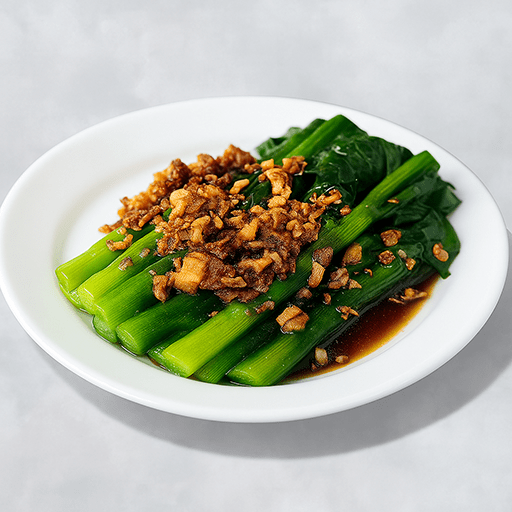Thai food is widely loved for its vibrant spicy, sour, sweet, and salty flavors, which come together in dishes such as curries, soups, and stir-fries. If you have celiac disease, gluten sensitivity, or simply avoid wheat, you might want to know if Thai food is gluten-free.
Traditional Thai cuisine relies on naturally gluten‑free ingredients such as rice, coconut milk, herbs, and vegetables. However, regional variations and modern products can sometimes contain gluten. Let’s look at how Thai food fits a gluten-free diet, which dishes are safe, and which dishes to watch out for.
Thai Cuisine: Centered on Rice, Not Wheat
Contrary to Western diets based on bread, pasta, or flour-based sauces, Thai cuisine features rice as its main grain. It is not just served as a side dish but as a staple of every meal, utilized in main courses, desserts, and even drinks. This is what makes this cuisine particularly well-suited for gluten-free consumption.
Wheat flour is hardly ever utilized in everyday Thai kitchens. Rather, rice flour, tapioca starch, or coconut milk is used to thicken or bind food. This keeps dishes naturally light and, in most cases, gluten‑free.
Gluten-Free Staples in Thai Cooking
- Jasmine rice: Scented, long-grain rice served alongside stir-fries, curries, and grilled foods.
- Sticky rice (glutinous rice): Widely popular in Northern and Northeastern Thailand, served both in savory dishes and in sweet desserts.
- Rice noodles: A staple in dishes like Pad Thai and Pad Kee Mao, are made solely from rice flour and water.
- Coconut milk: Used in curries, soups, and sweets as a creamy, rich, dairy and gluten-free base.
- Thai herbs and spices: All of the ingredients used in lemongrass, kaffir lime leaves, galangal, Thai basil, garlic, shallots, and chilies are gluten-free by nature.
Since all these ingredients are the foundation of most staples, many can be served gluten-free without needing any changes.
Traditional Thai Dishes That Are Naturally Gluten-Free
Most of Thailand’s signature dishes are naturally gluten-free when prepared traditionally. Some of the gluten-free Thai foods include:
- Pad Thai: Stir-fried rice noodles with egg, tofu or shrimp, tamarind paste, fish sauce, palm sugar, and bean sprouts. When cooked traditionally, it is gluten-free.
- Green Curry (Gaeng Keow Wan): A spicy, herby curry with coconut milk, green curry paste, eggplant, Thai basil, and protein of choice.
- Tom Yum Goong: A sour, spicy shrimp soup flavored with lemongrass, kaffir lime, galangal, mushrooms, and chili. The broth is naturally gluten-free.
- Som Tum (Green Papaya Salad): A refreshing papaya salad with lime, palm sugar, dried shrimp, fish sauce, and garlic.
- Mango Sticky Rice (Khao Niew Mamuang): A traditional Thai dessert of glutinous rice, coconut milk, and fresh mango slices.
- Grilled Satay Skewers: Marinated meats grilled over an open flame and served with a rich peanut sauce, which is often wheat-free.
These dishes demonstrate the original concept of Thai cooking: making delicious, well-balanced meals using minimal processing and naturally safe ingredients.
Common Hidden Sources of Gluten in Thai Food
Though the foundation of Thai cuisine is gluten-free, some ingredients that may contain gluten are:
- Soy sauce: Traditional soy sauce is brewed with wheat and is sometimes added to stir-fries or rice dishes
- Oyster sauce: Used to enhance umami flavor in some stir-fried dishes; usually contains wheat-based thickeners
- Hoisin sauce: Occasionally used in fusion-style Thai cooking; typically contains wheat flour
- Dark soy sauce (Si-Iu Dam): A thicker, sweeter sauce made with wheat; used in dishes like Pad See Ew
- Egg noodles or wheat noodles: Found in dishes such as Khao Soi (Northern Thai curry noodles) and Ba Mee
- Store-bought curry pastes: Some commercial curry pastes contain wheat-derived stabilizers or preservatives
How Thai Food Compares to Other Asian Cuisines
Many Asian cuisines—Chinese, Japanese, Korean—lean on wheat‑based soy sauces, noodles, and batters, while Thai cooking centers on rice noodles, fish‑sauce flavoring, and coconut milk, so traditional dishes start off gluten‑free more often than not.
Conclusion
At its core, Thai food is centered on fresh, naturally gluten-free foods such as rice, coconut milk, herbs, and vegetables. However, some contemporary sauces or noodle types include gluten; various conventional Thai meals are naturally safe for gluten‑free diners. From colorful curries to stir-fried rice noodles and sweet coconut treats, there’s no reason to deprive yourself of bold Thai tastes.
Whether you have a gluten intolerance or just want healthy, fresh, satisfying meals, there are many great options on our menu you’ll feel good about consuming.
